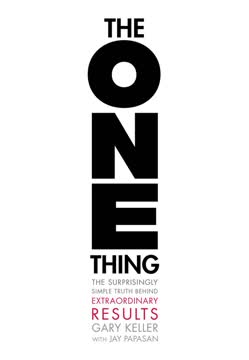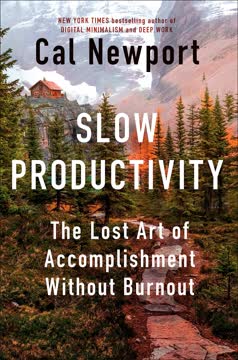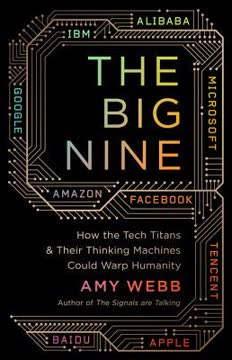Key Takeaways
1. Honda's success stems from embracing paradox and unconventional thinking
"Honda has maintained the flexibility of a start-up even as it has grown to be the number-two Japanese car company producing some of the most celebrated and bestselling cars in the United States and across the globe."
Unconventional approach: Honda's success is rooted in its ability to challenge conventional wisdom and embrace seemingly contradictory ideas. This approach allows the company to remain agile and innovative, even as it has grown into a global automotive giant.
Key principles:
- Individual responsibility over corporate mandates
- Simplicity over complexity
- Decision-making based on observed facts, not theories
- Minimalism over waste
- Flat organization over exploding flow charts
- Autonomous and accountable teams
- Perpetual change and unyielding cynicism about accepted truths
By adhering to these principles, Honda has consistently outperformed its competitors and maintained a unique position in the automotive industry.
2. Sangen shugi: The power of firsthand knowledge in decision-making
"Gen-ba. The real spot: go to the factory floor, the showroom, the backyard, the parking lot, the driver's seat, the back row, the truck cab and bed—wherever you must—to get firsthand knowledge."
Firsthand experience: Honda's sangen shugi principle emphasizes the importance of direct observation and experience in decision-making. This approach ensures that decisions are based on real-world knowledge rather than assumptions or secondhand information.
The three realities of sangen shugi:
- Gen-ba: The real spot (go to the source)
- Gen-butsu: The real part (focus on the actual situation)
- Gen-jitsu: The real facts (support decisions with collected data)
By consistently applying sangen shugi, Honda ensures that its employees at all levels have a deep understanding of their products, processes, and customers, leading to more effective problem-solving and innovation.
3. Respect for individualism fuels Honda's innovation engine
"Honda sees collaboration from the vantage point of the individual, not the team. As the automaker sees it, the individual is more vital than the group; his or her capabilities, decision making, knowledge, and creativity are the wellsprings from which the group's performance ultimately emerges."
Individual empowerment: Honda's culture of respecting and nurturing individual creativity and responsibility sets it apart from many other large corporations. This approach fosters a more engaged and innovative workforce.
Key aspects of Honda's individualism:
- Encouraging employees to challenge the status quo
- Valuing diverse perspectives and ideas
- Promoting personal growth and development
- Rewarding initiative and creative problem-solving
By prioritizing individual contributions, Honda creates an environment where employees feel empowered to innovate and take ownership of their work, ultimately driving the company's success.
4. Honda's flexible manufacturing system revolutionizes car production
"Honda's assembly line flexibility allows it to make a small profit on the Ridgeline and, hence, to continue to dabble with new designs that could lead to even greater returns in future, potentially more lucrative vehicles."
Adaptable production: Honda's flexible manufacturing system allows the company to produce multiple vehicle models on the same assembly line with minimal downtime between changes. This approach provides significant advantages in efficiency and cost-effectiveness.
Benefits of Honda's flexible manufacturing:
- Ability to quickly adapt to market demands
- Reduced costs associated with dedicated production lines
- Increased factory utilization rates
- Faster new model introductions
- Improved ability to maintain profitability on lower-volume models
Honda's manufacturing flexibility has become a benchmark in the automotive industry, allowing the company to remain competitive and responsive to changing market conditions.
5. Waigaya: Honda's unique approach to problem-solving and decision-making
"Waigaya to me means perpetual dissatisfaction. At our company, self-satisfaction is the enemy."
Collaborative problem-solving: Waigaya, Honda's distinctive meeting style, encourages open and frank discussions among employees at all levels. This approach fosters creativity, innovation, and continuous improvement.
Key principles of waigaya:
- Everyone is equal in the discussion
- All ideas must be challenged and proven valid
- Ideas belong to the group, not individuals
- Meetings end with clear decisions and responsibilities
By embracing waigaya, Honda creates an environment where the best ideas can emerge, regardless of their source, and where continuous improvement is ingrained in the company culture.
6. Honda's R&D autonomy drives continuous innovation and market leadership
"Honda R&D could choose everything germane to the company to explore and advance. In Honda's current lexicon that translates into experimenting with concepts and features that further mobility, a term that encompasses a broad spectrum of products including robots, planes, cars, motorcycles, lawn mowers, snowblowers, and tillers."
Independent innovation: Honda's decision to spin off its R&D division as a separate entity allows for greater autonomy and creativity in research and development. This structure enables Honda to consistently produce groundbreaking technologies and products.
Advantages of Honda's R&D approach:
- Freedom from short-term financial pressures
- Ability to pursue long-term, high-risk projects
- Cross-pollination of ideas across different product lines
- Attraction and retention of top engineering talent
By giving its R&D division significant independence, Honda ensures a steady stream of innovations that keep the company at the forefront of the automotive and mobility industries.
7. Building a resilient supplier network through partnership and tough love
"Honda's constant presence kind of feels like Big Brother looking over your shoulder sometimes. And it can be annoying the way they are always right until they're wrong. But I have to admit even when I am most critical of Honda that we are improving as a manufacturer because of the attention and the demands."
Supplier development: Honda's approach to supplier relationships combines high expectations with active support and involvement. This strategy ensures a robust and high-performing supply chain that can adapt to changing market conditions.
Key aspects of Honda's supplier strategy:
- Rigorous selection process focusing on culture fit
- Intensive training and support for new suppliers
- Continuous monitoring and improvement initiatives
- Encouragement of supplier innovation and autonomy
By investing heavily in its supplier relationships, Honda creates a network of partners that can deliver high-quality components and adapt to the company's evolving needs.
8. Honda's localization strategy outperforms traditional globalization
"Honda is a local company wherever it goes, because it doesn't impose a system from the top; it lets a system emerge out of the culture."
Cultural adaptation: Honda's localization approach, which focuses on becoming a truly local company in each market it enters, has proven more successful than traditional globalization strategies. This method allows Honda to better understand and serve local markets while maintaining its core values.
Elements of Honda's localization strategy:
- Empowering local management and decision-making
- Developing products tailored to local preferences
- Establishing local R&D and engineering capabilities
- Building strong relationships with local suppliers and communities
By embracing localization, Honda has been able to navigate complex international markets more effectively than many of its competitors, leading to sustained global success.
9. The importance of manufacturing in driving economic growth and innovation
"The ability to make things is fundamental to the ability to innovate things over the long term."
Manufacturing's crucial role: The book argues that a strong manufacturing sector is essential for sustainable economic growth and innovation. Countries that neglect manufacturing risk losing their competitive edge and facing long-term economic challenges.
Benefits of a robust manufacturing sector:
- Higher wages and better job opportunities
- Improved trade balance and reduced reliance on imports
- Stimulation of research and development
- Increased productivity and economic growth
- Enhanced national security and self-reliance
By highlighting the importance of manufacturing, the book makes a case for policies and strategies that support the development and maintenance of a strong industrial base, using Honda's success as an example of the potential benefits.
Last updated:
FAQ
What’s Driving Honda: Inside the World’s Most Innovative Car Company by Jeffrey Rothfeder about?
- Comprehensive company history: The book traces Honda’s journey from a small Japanese motorcycle maker to a global automotive powerhouse, focusing on its unique culture, management, and manufacturing philosophy.
- Focus on innovation and paradox: Rothfeder explores how Honda’s embrace of paradox and contradiction fuels creativity, continuous improvement, and adaptability.
- Global localization strategy: The narrative highlights Honda’s approach to embedding itself in local markets worldwide, contrasting it with traditional globalization models.
Why should I read Driving Honda by Jeffrey Rothfeder?
- Insight into unique culture: The book reveals how Honda’s principles—like embracing paradox, respecting individualism, and “going to the real place”—create a dynamic, innovative work environment.
- Lessons in manufacturing innovation: Readers gain a detailed look at Honda’s revolutionary manufacturing methods, including flexible, labor-intensive processes and integrated quality control.
- Broader business relevance: Rothfeder situates Honda’s story within the context of globalization, supply chain management, and economic growth, offering valuable lessons for business leaders and policymakers.
What are the key takeaways from Driving Honda by Jeffrey Rothfeder?
- Paradox as a driver: Honda’s success is rooted in its ability to balance opposing ideas—such as centralization vs. decentralization and creativity vs. discipline—to foster innovation.
- Decentralized, empowered culture: The company’s flat structure and respect for individualism empower employees at all levels to contribute ideas and challenge norms.
- Manufacturing as a craft: Honda’s approach to manufacturing emphasizes skill, pride, and continuous improvement, viewing it as a noble craft essential to economic prosperity.
What are the most important principles of Honda’s culture in Driving Honda?
- Embrace paradox: Honda encourages employees to hold and debate conflicting ideas, using this tension to drive creativity and improvement.
- Sangen shugi (three realities): Decisions are based on firsthand observation—going to the real place, seeing the real part, and understanding the real facts.
- Respect for individualism: Honda values independent, creative thinkers and fosters a flat organizational structure where every voice matters.
How does Jeffrey Rothfeder describe Honda’s “sangen shugi” principle in Driving Honda?
- Three realities explained: Sangen shugi means going to the real place (gen-ba), focusing on the real part (gen-butsu), and basing decisions on real facts (gen-jitsu).
- Firsthand observation: Managers and engineers are expected to personally visit factory floors, test vehicles, and engage with customers before making decisions.
- Foundation for adaptability: This principle underpins Honda’s decentralized global strategy, empowering local operations to adapt products and processes to their markets.
What is “waigaya” and how does it shape Honda’s management style in Driving Honda?
- Open, spontaneous meetings: Waigaya are informal gatherings where employees at all levels freely discuss problems and ideas, encouraging debate and challenging assumptions.
- Rules of engagement: Everyone is equal, ideas are disputed until validated or rejected, and once shared, ideas belong to the company.
- Fostering innovation: These meetings create a culture of perpetual dissatisfaction with the status quo, enabling continuous improvement and harnessing collective intelligence.
How does Honda’s approach to innovation and failure differ, according to Driving Honda?
- Failure as a motivator: Honda views failure as an essential part of the innovation process, encouraging risk-taking and learning from mistakes.
- Rewarding experimentation: Employees are supported in trying new ideas, even if they fail, as long as they contribute to progress.
- Continuous improvement: Innovation is seen as an ongoing process of debate and synthesis, supported by open communication and individual responsibility.
How does Honda’s manufacturing system stand out from other automakers, as described in Driving Honda?
- Integrated assembly: Honda builds engines and assembles cars in the same factory, allowing close coordination and faster problem-solving.
- Flexible, labor-intensive processes: Plants can produce multiple models on the same line with minimal downtime, relying on skilled workers rather than heavy automation.
- Five-zone assembly line: The factory is divided into zones responsible for both assembly and quality control, enhancing accountability and reducing defects early.
What role does Honda R&D play in the company’s innovation process, according to Driving Honda?
- Autonomous research entity: Honda spun off its R&D to protect it from short-term pressures, allowing for long-term, risk-taking research.
- Integrated development: R&D collaborates closely with engineering, manufacturing, and sales throughout the product cycle, breaking down silos and accelerating innovation.
- Broad research scope: Honda R&D covers both applied automotive technologies and basic research, leading to innovations like the ASIMO robot and fuel-cell vehicles.
How does Honda manage supplier relationships differently, as explained in Driving Honda?
- Partnership approach: Honda treats suppliers as integral partners, demanding high quality and innovation while providing support and training.
- Transparency and development: The company sends teams to suppliers’ factories for improvement programs and requires full access to operational data.
- Shared risk and reward: Agreements balance cost fluctuations with efficiency improvements, fostering mutual trust and long-term collaboration.
How does Driving Honda explain Honda’s strategy of localization versus globalization?
- Autonomous local operations: Honda builds self-sufficient manufacturing, R&D, and supplier networks in each region to tailor products to local markets.
- Limits of globalization: The book discusses challenges Honda faced in China, such as geopolitical tensions and labor unrest, highlighting the complexity of global operations.
- Long-term local commitment: Honda’s approach contrasts with centralized models, emphasizing deep integration into local cultures and economies for sustainable success.
What are the “Three Joys” in Honda’s corporate philosophy, as described in Driving Honda?
- Joy of Producing: Employees find satisfaction and pride in creating superior products that contribute to society, encouraging creativity and craftsmanship.
- Joy of Selling: Dealers and salespeople experience fulfillment by offering high-quality, reasonably priced products that customers value.
- Joy of Buying: Customers feel ultimate satisfaction when a product exceeds expectations, inspiring Honda to design products that delight and improve lives.
Review Summary
Driving Honda receives mostly positive reviews, with readers praising its insights into Honda's unique corporate culture, innovation, and global strategy. Many appreciate the historical context and anecdotes about the company's founder. However, some criticize the book for being overly biased and presenting an overly positive view of Honda. Readers found the information on Honda's approach to manufacturing, localization, and problem-solving particularly interesting. The book's later chapters on globalization and international markets also garnered attention, though some felt they strayed from the main focus.
Similar Books










Download PDF
Download EPUB
.epub digital book format is ideal for reading ebooks on phones, tablets, and e-readers.




